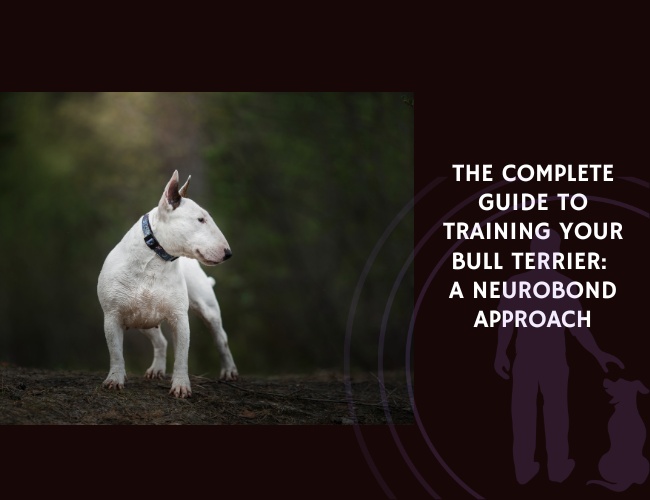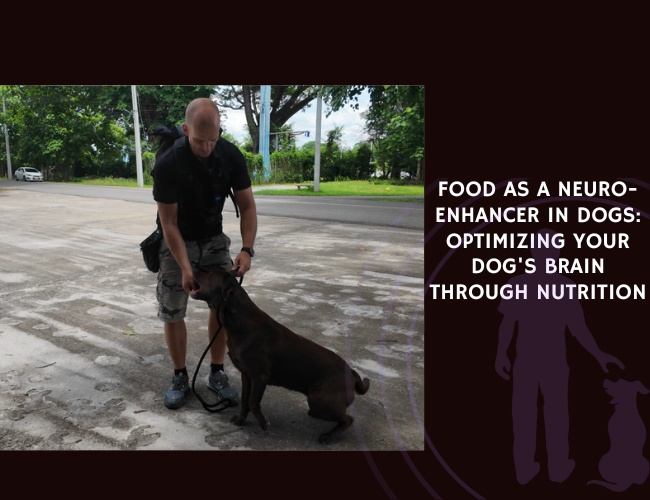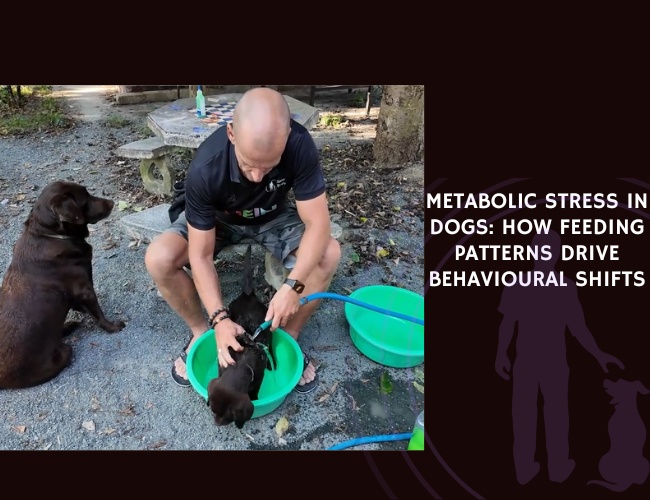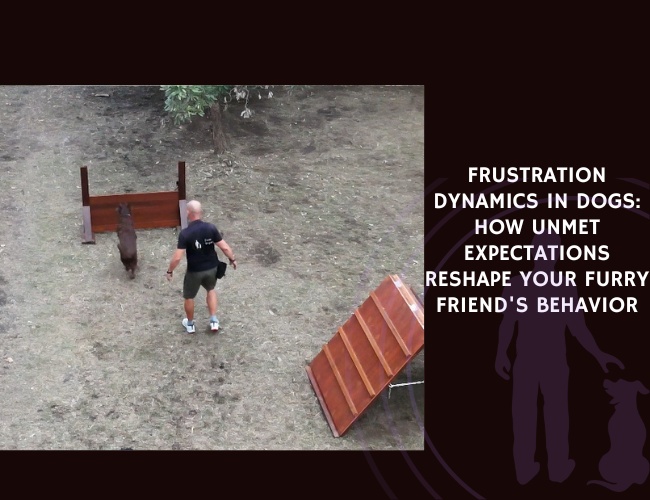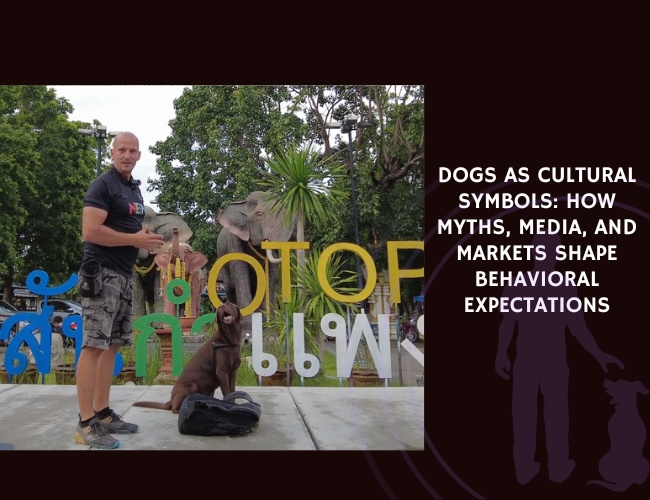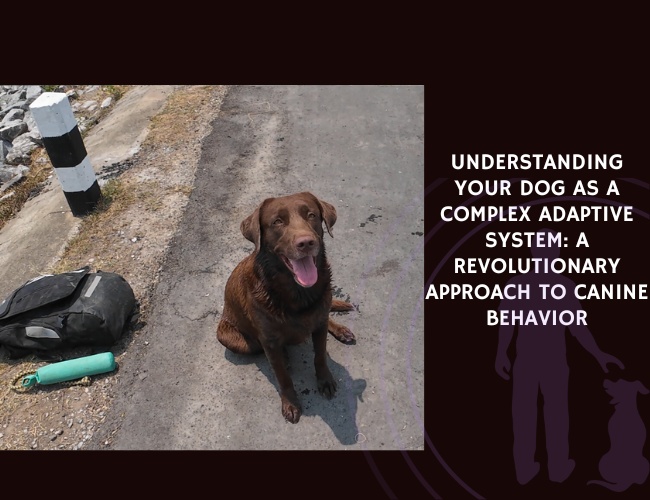Introduction
The Bull Terrier stands as one of the most misunderstood breeds in the canine world—a dog whose egg-shaped head and muscular build often overshadow the deeply sensitive, intelligent soul within. Originally bred in 19th century England as the “White Cavalier,” these remarkable dogs carry within them a unique blend of terrier tenacity and bulldog gentleness. Yet beneath their distinctive appearance lies a complex emotional architecture that requires not control, but connection. This is where the NeuroBond approach transforms everything you thought you knew about training your Bull Terrier.
Rather than forcing your Bull Terrier into submission through outdated dominance theories, we’ll guide you through a revolutionary approach that honors their instinctive nature while building an invisible leash of trust. You’ll discover how their strong-willed reputation actually masks a profound capacity for partnership—when approached with the right understanding.
Character & Behavior: Understanding Your Bull Terrier’s Inner World
The Emotional Operating System
Your Bull Terrier is, quite literally, an operating system on four legs—one programmed with centuries of selective breeding that created a unique behavioral blueprint. Research reveals that Bull Terriers experience hormonal fluctuations directly tied to their temperamental traits, including fear, anxiety, excitability, and yes, sometimes aggression. But here’s what most trainers miss: these aren’t problems to fix, they’re feedback about your connection.
The Bull Terrier Temperament Spectrum:
- High Energy Processing: Your Bull Terrier’s brain operates at a different frequency than many breeds. This isn’t hyperactivity—it’s enhanced environmental awareness
- Emotional Intensity: When a Bull Terrier feels, they feel deeply. Joy becomes exuberance, frustration becomes stubbornness
- Loyalty Architecture: Once bonded, their attachment runs deeper than most breeds—creating both their greatest strength and their training foundation
Reading the Behavioral Feedback
Every behavior your Bull Terrier displays is a message about connection, exposure, or unmet needs. That infamous “stubbornness”? It’s actually your dog solving problems with the tools they have. When we understand this, training transforms from a battle of wills to a collaborative conversation.
Decoding Common Bull Terrier Behaviors:
- The Bull Terrier Freeze: When overwhelmed, they may become statue-still—this isn’t defiance, it’s processing
- The Spin Cycle: Repetitive spinning often signals overstimulation, not disobedience
- The Selective Hearing: What looks like ignoring commands is often contextual confusion
Remember, your Bull Terrier’s logic may differ from yours—but it’s always valid in their world. 🧡
Vocalization & Communication: How Your Bull Terrier “Talks”
The Language Beyond Barks
Bull Terriers possess a remarkably nuanced communication system that extends far beyond simple barking. They’re actually one of the more vocally expressive terrier breeds, using a range of sounds that many owners initially misinterpret.
The Bull Terrier Vocal Repertoire:
- The Grunt-Talk: Low rumbling sounds during play or attention-seeking—this is contentment, not aggression
- The Terrier Scream: A high-pitched vocalization when extremely excited—often mistaken for distress
- The Conversational Growl: Soft growling during interaction that’s actually invitation, not warning
Building the Communication Bridge
In the NeuroBond approach, we don’t suppress these vocalizations—we learn to read them as the sophisticated language they are. Your Bull Terrier is constantly giving you feedback about their internal state. The key is learning to listen with more than just your ears.
Multi-Modal Communication Signals:
- Tail Position + Vocalization: A stiff, high tail with grumbling means excitement, not aggression
- Body Tension + Eye Contact: Relaxed muscles with direct gaze signals trust and readiness to engage
- Movement Patterns + Sounds: Circular movements with soft vocalizations indicate play invitation
Your Bull Terrier’s entire body becomes a communication device when you learn to read the complete picture. This forms the foundation of the invisible leash—when they know you understand them, they naturally stay close. 🐾
Training & Education: The NeuroBond Method in Action
First Step: Build the NeuroBond
All effective Bull Terrier training starts not with commands, but with connection. Given their intense loyalty architecture, Bull Terriers need to feel the bond before they’ll follow the lead. This isn’t about being “alpha”—it’s about becoming their trusted guide through a confusing human world.
Establishing Primary Connection:
- The Check-In Protocol: Teach your Bull Terrier to naturally look at you for guidance
- Stand quietly with your Bull Terrier on leash
- Wait for any glance in your direction
- Mark and reward the moment of eye contact
- Gradually extend duration before reward
- The Proximity Principle: Let them discover that being near you brings good things
- No calling, no commands—just rewards for choosing closeness
- This builds the invisible leash foundation
- The Trust Transfer: Show them you’re the solution provider
- When they encounter something new or startling, be calm and confident
- Let them process while you remain their stable anchor
From Bond to Task: Natural Learning Pathways
Once the NeuroBond is established, training becomes almost effortless because it flows through relationship, not obedience. Bull Terriers, with their problem-solving heritage, excel when allowed to find solutions through their own instinctive responses.
The Standing Leash Technique:
- Step on the leash, leaving just enough slack for comfort but not jumping
- Wait. Don’t command. Let your Bull Terrier figure it out
- The moment they sit or lie down (their solution), mark and reward
- They’ve just taught themselves that calm behavior brings freedom
Word Association Through Experience:
- Pair natural behaviors with words after they occur
- When they naturally come to you: “Come” + reward
- When they naturally sit: “Sit” + reward
- Commands become invisible because they’re tied to voluntary actions
Age-Specific Adaptations
Puppy Bull Terriers (8 weeks – 6 months):
- Focus on exposure and positive associations
- Short, frequent bonding sessions (5-10 minutes)
- Priority on socialization within the NeuroBond framework
Adolescent Bull Terriers (6 months – 2 years):
- Channel their increasing energy through structured activities
- Maintain consistency as hormonal changes affect behavior
- Strengthen the bond through shared challenges
Adult Bull Terriers (2+ years):
- Refine communication and deepen trust
- Address any established patterns through bond reinforcement
- Continue mental stimulation to prevent boredom-based behaviors
Performance & Activities: Channeling the Bull Terrier Drive
Understanding the Working Heritage
Your Bull Terrier carries within them the legacy of both terrier tenacity and bulldog determination. This isn’t a breed content with simple walks—they need purposeful activity that engages both body and mind. In the NeuroBond framework, we channel these drives constructively rather than suppressing them.
Natural Drive Expression:
- The Grip: Bull Terriers have an inherent need to grab and hold—provide appropriate outlets
- The Chase: Motion triggers their terrier instincts—use this for structured games
- The Challenge: They thrive on problem-solving—mental puzzles prevent destructive creativity
Structured Activities Within NeuroBond
Tug with Rules:
- Teaches impulse control through their favorite activity
- “Take it” and “Drop it” become natural through the game
- Builds confidence while reinforcing your role as activity provider
Scent Work Challenges:
- Engages their problem-solving nature
- Allows independent thinking within structured parameters
- Strengthens the “check-in” behavior when they succeed
Agility with Connection:
- Not about speed, but about teamwork
- Each obstacle becomes a trust exercise
- Natural confidence building through guided success
Remember: exhausted dogs aren’t well-behaved dogs—they’re just exhausted. True calmness comes from mental satisfaction and emotional security.
Tenacious. Tender. Tuned.
Bull Terriers don’t resist—they recalibrate.
What you see as stubborn is often problem-solving in real time. Push harder, and they push back. Tune in instead—and they come forward willingly.
Their strength hides a soft signal.
Beneath the bold build is a system wired for emotional resonance. One wrong tone breaks the bond—one right moment builds it for life. They don’t need louder cues. They need you.
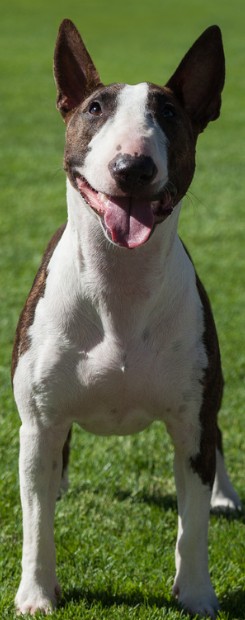

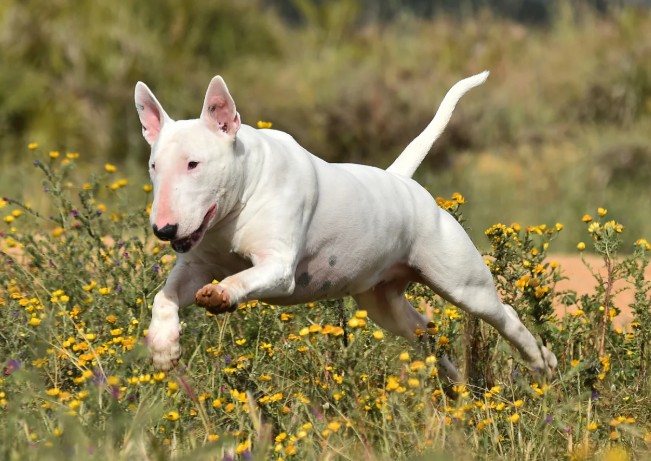
This isn’t control—it’s collaboration.
With the NeuroBond in place, your Bull Terrier stops performing and starts partnering. Because when the connection leads, behavior follows—voluntarily, powerfully, and with heart.
Nutritional Recommendations: Feeding the Whole Dog
The Behavior-Nutrition Connection
Research shows that hormonal fluctuations in Bull Terriers directly correlate with behavioral traits. What you feed isn’t just about physical health—it’s about emotional stability and training success. The NeuroBond approach recognizes nutrition as a foundational element of behavioral wellness.
Optimal Feeding Framework:
- Protein Balance: 25-28% high-quality protein supports their muscular build without creating excess energy
- Omega-3 Integration: Supports cognitive function and may reduce anxiety-related behaviors
- Meal Timing: Consistent feeding schedules support hormonal regulation
Food as Training Tool
Within the NeuroBond method, feeding becomes another opportunity for connection:
The Working Meal:
- Use portion of daily food for training rewards
- Creates motivation without overfeeding
- Reinforces that good things come through relationship
The Calm Feeder Protocol:
- Require a moment of eye contact before meals
- Builds automatic check-in behavior
- Transforms mealtime into bonding time
Addressing Food-Related Challenges:
- Resource guarding: Work through trust, not confrontation
- Picky eating: Often signals stress or medical issues
- Overeating: May indicate anxiety—address the cause, not just the symptom
Health Concerns: The Mind-Body Connection
Behavioral Health Indicators
Your Bull Terrier’s behavior often provides the first clues to health issues. Within the NeuroBond framework, we recognize that physical wellness and emotional balance are inseparable.
Common Health-Behavior Links:
- Skin Conditions: May increase irritability and decrease training focus
- Heart Issues: Can manifest as exercise intolerance mistaken for stubbornness
- Kidney Problems: May cause increased anxiety or confusion
- Compulsive Behaviors: Tail chasing or excessive licking often have medical roots
The Neutered Male Consideration
Research specifically indicates that neutered male Bull Terriers may display increased human-directed aggression compared to intact males. This doesn’t mean avoiding neutering, but rather understanding that:
- Hormonal changes affect behavior
- Training approaches may need adjustment post-neutering
- The NeuroBond becomes even more critical for emotional stability
Supporting the Neutered Bull Terrier:
- Increase mental stimulation to compensate for hormonal changes
- Monitor for anxiety or reactivity changes
- Strengthen bond-based activities over command-based training
Preventive Behavioral Medicine
- Regular health checks prevent behavior changes from underlying illness
- Document behavioral patterns to catch early changes
- Trust your instincts—you know your dog’s normal
Lifestyle & Environment: Creating the Optimal Setting
The Bull Terrier Habitat
Your home environment directly impacts your Bull Terrier’s ability to learn and maintain emotional balance. These dogs thrive on routine and clear boundaries—not because they need control, but because predictability reduces anxiety.
Environmental Essentials:
- Defined Spaces: Clear areas for rest, play, and training
- Sensory Management: Bull Terriers can be sensitive to environmental stimuli
- Safe Zones: A quiet retreat space for processing and decompression
Family Integration
Bull Terriers see themselves as family members, not pets. The NeuroBond approach extends to every household member:
Multi-Person Household Strategies:
- Each person develops their own bond rituals
- Consistent rules across all family members
- Children learn to read dog communication signals
The Bull Terrier with Other Pets:
- Early socialization within the bonding framework
- Supervised interactions that build positive associations
- Respect for the Bull Terrier’s need for individual attention
Urban vs. Rural Considerations
City Bull Terriers:
- Need extra socialization to handle stimulation
- Benefit from structured calm in chaotic environments
- Require creative exercise solutions
Country Bull Terriers:
- May develop stronger territorial behaviors
- Need recall training through bond, not command
- Benefit from purposeful activities beyond just space
Senior Care: Evolving the Bond
The Aging Bull Terrier Mind
As your Bull Terrier ages, their behavioral needs shift—but the NeuroBond only deepens. Senior Bull Terriers often show increased attachment and may develop new anxieties. This isn’t regression; it’s evolution.
Senior-Specific Adaptations:
- Cognitive Support: Mental stimulation prevents decline
- Routine Flexibility: Maintain structure while accommodating physical changes
- Increased Check-ins: They may need more reassurance
Adapting Training for Senior Dogs
The beauty of NeuroBond training is its adaptability:
- Physical commands transform to visual or verbal cues
- High-energy activities shift to scent work and puzzles
- The invisible leash strengthens as physical capabilities decrease
Common Senior Challenges:
- Confusion or Disorientation: Increase environmental predictability
- Increased Vocalization: Often indicates discomfort or confusion
- Changed Sleep Patterns: May need adjusted routine and extra comfort
Your senior Bull Terrier has spent years building trust with you. Now they’re cashing in that emotional investment. Honor it. 🧡
Common Training Challenges: Solutions Through Connection
The “Stubborn” Bull Terrier Myth
What appears as stubbornness is usually one of three things:
- Contextual Confusion: They don’t understand what you want
- Competing Motivation: Something else is more interesting
- Emotional Overwhelm: They’re too stressed to respond
The NeuroBond Solution:
- Return to foundation bonding exercises
- Simplify the request and environment
- Check for health or stress factors
Addressing Reactivity
Some Bull Terriers develop reactivity toward dogs or humans. Research shows this may increase in neutered males. Traditional suppression methods often worsen the issue.
Connection-Based Reactivity Work:
- Build focus on you as the safety provider
- Create positive associations at increasing proximities
- Never force interactions—let them choose engagement
The Pulling Problem
A Bull Terrier pulling isn’t trying to dominate—they’re following their instincts:
The Invisible Leash Solution:
- Stop moving when they pull (natural consequence)
- Reward any slack in the leash
- Practice “connection walks” with no destination
- Build the habit of checking in during movement
Conclusion: Is the Bull Terrier-NeuroBond Partnership Right for You?
The Bull Terrier trained through NeuroBond methods becomes something extraordinary—not an obedient robot, but a true partner. This approach requires:
Your Commitment To:
- Building relationship over demanding compliance
- Understanding their communication before expecting understanding
- Seeing behavior as feedback, not defiance
- Investing time in connection before expecting results
Questions for Prospective Bull Terrier Guardians:
- Can you see training as a lifestyle, not a task list?
- Will you honor their sensitivity beneath the tough exterior?
- Can you provide both mental and physical outlets?
- Will you commit to being their trusted guide, not their boss?
If you answered yes, you’re ready to experience the profound bond possible with a Bull Terrier. Through the NeuroBond approach, you won’t just train a dog—you’ll develop a partnership that transcends traditional obedience. Your Bull Terrier will choose to stay close, not because they must, but because with you is exactly where they want to be.
The invisible leash isn’t a training technique—it’s the natural result of a connection so strong that no physical restraint could ever match it. Welcome to a new way of living with your Bull Terrier. Welcome to NeuroBond. 🐾

